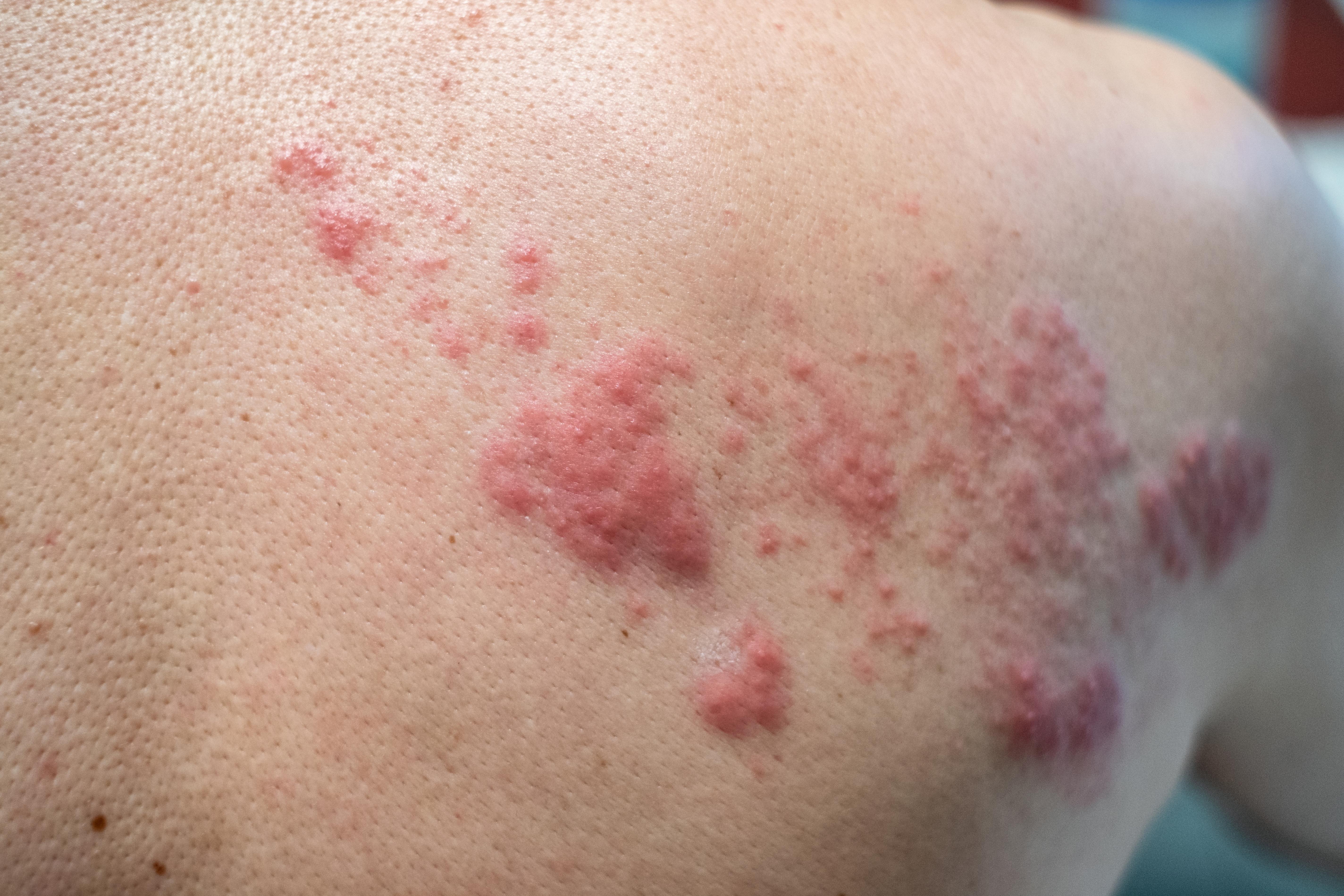12 Hidden Tick Bite Signs That Demand Immediate Action
Tick bites are more than just a minor inconvenience; they can be gateways to serious health issues if not identified and treated promptly. These small arachnids are vectors for a variety of pathogens, most notably the bacteria responsible for Lyme disease. However, the danger doesn't end there. Ticks can transmit a host of other diseases, including Rocky Mountain spotted fever, ehrlichiosis, and babesiosis, each with its own set of symptoms and complications. Understanding the indicators of a tick bite that require urgent attention can be the difference between a quick recovery and a long-term health battle. This article explores the top 12 tick bite indicators that should prompt immediate medical consultation. By the end of this deep dive, you'll be equipped with the knowledge to recognize these warning signs, understand their implications, and take action to protect your health and that of your loved ones.
1. The Classic Bullseye Rash

One of the most well-known indicators of a tick bite, particularly in the context of Lyme disease, is the bullseye rash, or erythema migrans. This rash typically appears within 3 to 30 days after a tick bite and begins as a small red spot at the site of the bite. Over time, it expands outward, often developing a clear center, resembling a target. While not everyone bitten by a tick will develop this rash, its presence is a strong indicator of Lyme disease and necessitates immediate medical evaluation. Ignoring this rash can lead to the progression of Lyme disease, which can affect the joints, heart, and nervous system if left untreated. It's crucial to remember that the absence of a rash does not rule out Lyme disease, as a significant percentage of patients may not exhibit this symptom. Therefore, awareness of other indicators is equally essential for comprehensive health monitoring.
2. Fever and Chills

Experiencing fever and chills after a tick bite can be an early sign of an infection. These symptoms are often associated with the body's immune response to foreign pathogens introduced by the tick. While fever and chills are common responses to many infections, their appearance following a tick bite should raise a red flag. Conditions like anaplasmosis and ehrlichiosis often begin with these flu-like symptoms, which can escalate if not addressed promptly. Infections transmitted by ticks, such as Rocky Mountain spotted fever, can rapidly become severe, leading to complications like organ failure if untreated. Therefore, if fever and chills develop after a tick bite, it's imperative to seek medical advice to rule out serious infections and begin appropriate treatment. Early intervention can prevent the progression of these diseases and reduce the risk of long-term health issues.
3. Severe Headache

A severe headache following a tick bite is another indicator that warrants immediate attention. This symptom can be a sign of several tick-borne illnesses, including Lyme disease and Rocky Mountain spotted fever. The headache may be accompanied by other symptoms such as neck stiffness, photophobia (sensitivity to light), and confusion, which can indicate the onset of meningitis or encephalitis, both of which are medical emergencies. Ignoring a severe headache can lead to serious complications, especially if it is a symptom of a neurological condition triggered by a tick-borne pathogen. Medical evaluation is crucial to determine the underlying cause and to initiate treatment to prevent further complications. In some cases, a lumbar puncture may be necessary to assess the presence of inflammation in the central nervous system.
4. Muscle and Joint Pain

Muscle and joint pain are common after a tick bite and can indicate the early stages of Lyme disease or other tick-borne illnesses like babesiosis. This pain is often migratory, meaning it can move from one joint to another, and is sometimes accompanied by swelling. Such symptoms can mimic those of arthritis, leading to misdiagnosis if the connection to a tick bite is not considered. The persistence of muscle and joint pain without an obvious cause should prompt an investigation into recent tick exposure. Early diagnosis and treatment with antibiotics can alleviate symptoms and prevent the development of chronic Lyme arthritis, a debilitating condition that can arise if Lyme disease is left untreated. It is important for individuals experiencing these symptoms to communicate any recent tick bites to their healthcare provider.
5. Fatigue and Malaise

Fatigue and a general feeling of malaise are nonspecific symptoms that can occur with many illnesses, but their presence after a tick bite should not be overlooked. These symptoms can be early indicators of Lyme disease, anaplasmosis, or other tick-borne infections. Fatigue related to these conditions can be profound and debilitating, affecting daily activities and quality of life. The challenge with fatigue and malaise is that they are often dismissed as minor or attributed to stress or lack of sleep. However, when linked to a recent tick bite, they should prompt further investigation to rule out an underlying infection. Proper diagnosis and treatment can lead to significant improvement in energy levels and overall well-being, highlighting the importance of considering these symptoms in the context of tick exposure.
6. Swollen Lymph Nodes

Swollen lymph nodes are another symptom that can arise after a tick bite, indicating the body's immune response to an infection. This can occur with several tick-borne diseases, including Lyme disease and tularemia. Lymph nodes may become tender and enlarged, particularly in areas near the site of the tick bite, such as the neck, armpits, or groin. The presence of swollen lymph nodes should be evaluated by a healthcare professional to determine the cause and appropriate treatment. While swollen lymph nodes can occur with many infections, their appearance following a tick bite should raise suspicion of a tick-borne illness. Early identification and treatment can prevent the progression of the disease and reduce the risk of complications.
7. Neurological Symptoms

Neurological symptoms such as numbness, tingling, or facial palsy can develop following a tick bite and are particularly associated with Lyme disease. These symptoms occur when the bacteria affect the nervous system, leading to conditions such as Lyme neuroborreliosis. Facial palsy, or Bell's palsy, is characterized by the sudden weakness or paralysis of facial muscles, often affecting one side of the face. Neurological symptoms require immediate medical attention to prevent long-term damage. Diagnostic tests, including blood tests and imaging studies, can help determine the extent of neurological involvement and guide treatment decisions. Timely intervention with antibiotics and supportive therapies can improve outcomes and reduce the risk of persistent neurological issues.
8. Skin Changes Beyond the Bullseye Rash

While the bullseye rash is the most recognized skin manifestation of a tick bite, other skin changes can also occur and should not be ignored. These can include multiple rashes, small red or purple spots, or a generalized rash that spreads across the body. Such skin changes can be indicative of conditions like Rocky Mountain spotted fever or Southern tick-associated rash illness (STARI). These skin manifestations can provide important clues to the underlying condition and should be evaluated by a healthcare professional. In some cases, a biopsy of the rash may be necessary to confirm the diagnosis. Early recognition and treatment of tick-borne illnesses associated with skin changes can prevent serious complications and improve patient outcomes.
9. Heart Palpitations or Irregular Heartbeat

Heart palpitations or an irregular heartbeat can develop as a result of Lyme carditis, a condition where the Lyme disease bacteria affect the heart tissue. This can lead to inflammation of the heart, resulting in symptoms such as chest pain, shortness of breath, and dizziness. Lyme carditis can be a life-threatening condition if not treated promptly. The presence of cardiac symptoms following a tick bite should prompt an immediate evaluation by a healthcare provider. Diagnostic tests such as an electrocardiogram (ECG) and echocardiogram can assess the heart's function and guide treatment decisions. Early intervention with antibiotics and supportive care can prevent serious cardiac complications and improve patient outcomes.
10. Gastrointestinal Symptoms

Gastrointestinal symptoms such as nausea, vomiting, diarrhea, or abdominal pain can occur following a tick bite and may be indicative of infections like ehrlichiosis or tularemia. These symptoms can be severe and are often accompanied by other systemic signs such as fever and malaise. The presence of gastrointestinal symptoms after a tick bite should prompt a thorough evaluation to determine the underlying cause. Laboratory tests can help identify the specific pathogen responsible for the infection and guide appropriate treatment. Early diagnosis and management are crucial to prevent dehydration and other complications associated with severe gastrointestinal symptoms.
11. Difficulty Breathing

Difficulty breathing or shortness of breath can be a sign of a severe allergic reaction to a tick bite or the development of a tick-borne illness like babesiosis. This symptom can be life-threatening and requires immediate medical attention. In some cases, difficulty breathing may be accompanied by other symptoms such as chest pain or a rapid heartbeat. The presence of respiratory symptoms following a tick bite should be considered a medical emergency. Prompt evaluation and treatment can prevent serious complications and improve patient outcomes. In cases of allergic reactions, emergency interventions such as epinephrine administration may be necessary to stabilize the patient.
12. Changes in Mental Status

Changes in mental status, such as confusion, difficulty concentrating, or memory problems, can occur following a tick bite and may be indicative of a neurological condition like Lyme disease or Powassan virus infection. These symptoms can be subtle or severe and may progress over time if not addressed. The presence of cognitive changes following a tick bite should prompt a thorough evaluation by a healthcare professional. Diagnostic tests such as neuroimaging and lumbar puncture may be necessary to assess the extent of neurological involvement and guide treatment decisions. Early intervention can prevent long-term cognitive impairment and improve quality of life.
The indicators of a tick bite that call for urgent attention are diverse and can affect multiple body systems. Recognizing these symptoms and understanding their implications are crucial for preventing serious health complications associated with tick-borne illnesses. Prompt medical evaluation and treatment can lead to better outcomes and reduce the risk of long-term health issues. As tick populations continue to expand, awareness and education about tick bite indicators are essential for protecting public health. By staying informed and vigilant, individuals can take proactive steps to safeguard their health and that of their loved ones.
